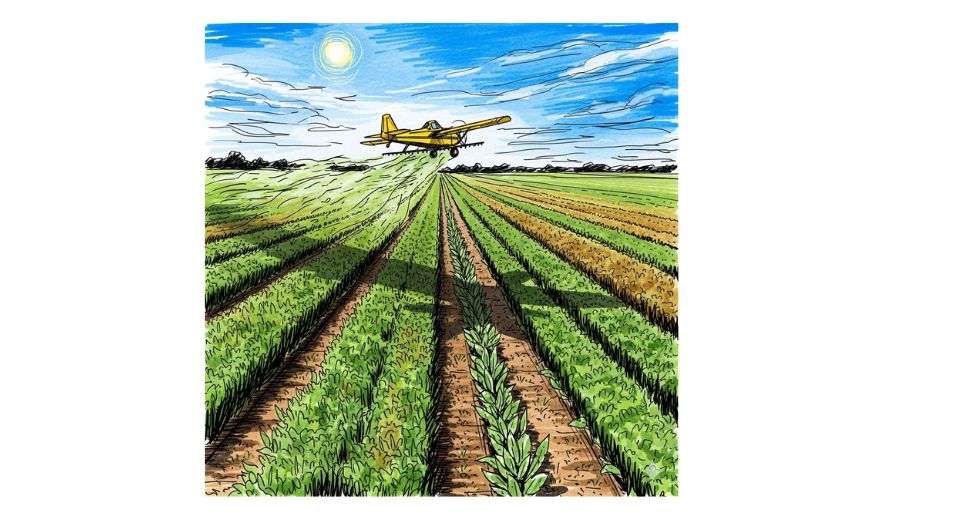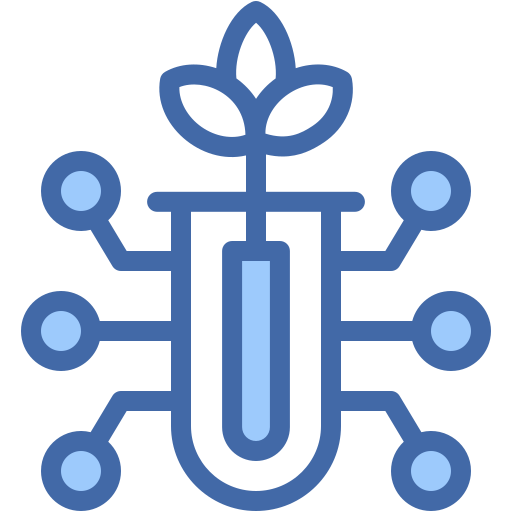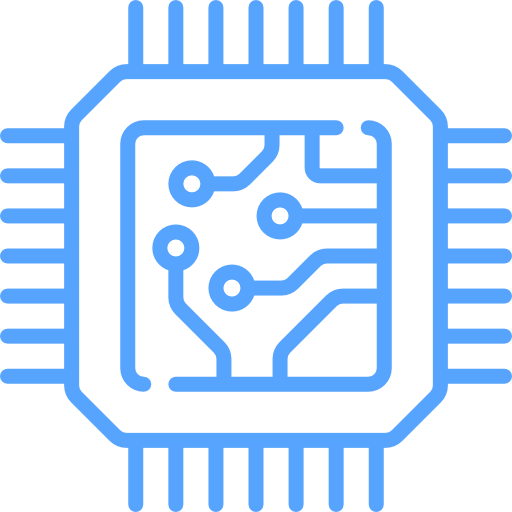Fungicide Market To Reach $24,348.33 Million by 2032

A Metastat Insight presentation of the global fungicides market report sets the tone for this account by being authoritative, targeted, and profound in observation. Thorough observation brings out dynamic movements of supply chains, farming needs, and geographical involvement. Stress on areas of intersection between sustainability needs and changing regulatory landscapes defines the tone from the very beginning. Long experience in the sector emerges through cautious voicing of challenges, breakthroughs, and strategy that characterizes current trends.
Strategies for changing Agri landscape environment are at the core throughout. Resistance patterns of pathogens, changing weather conditions, and rotation schemes impact product development and release. Advances in formulation technology indicate capability for improving targeted delivery and ecological compatibility. Focus on sustainable chemistry promotes investigation of biological controls, in addition to traditional chemicals, but pragmatic use still depends on well-established synthetic alternatives. Microencapsulation, nanotechnology, and adjuvant systems are integrated to enable improvement in efficacy, lowering of drift, and extended residual activity. At the same time, environmental pressure towards footprint reduction drives the direction towards lower application rates and production of substances with good ecotoxicological properties. Regulation within key producing regions dictates available practice.
Tightening of regulations in some jurisdictions results in phasing out of older active ingredients, whereas in other territories they are kept open by grandfather clauses or transition provisions. As older chemicals undergo phase-out, research teams shift towards the discovery of new modes of action or reformulation of incumbent materials to meet updated maximum residue levels and safety limits. Investment by industry in registration dossiers and environmental fate information remains essential to ensure market continuity. Public-private collaboration enables generation of safety and efficacy datasets required for regulatory clearance.
In parallel, the emergence of resistance in fungal pathogens fuels demand for rotation programs and incorporation of multi-site products that reduce risk of failure. Research and development pipelines include screening natural products, microbial metabolites, and plant extracts. Methods of extraction become more efficient to increase yield and purity, and the formulation developer investigates compatibility with adjuvants and wetting agents that enhance field performance.
Interest in positive microbial interactions provokes research on endophyte-based or soil-applied agents that induce plants to resist more effectively fungal attack. As demand from consumers for residue-free crops increases, use of such biocontrol agents increases among organic and integrated pest management practitioners, though scaling up is problematic. International trade patterns drive availability of raw materials and final formulations. Reliance on chemical intermediates from targeted regions makes the supply chain vulnerable to geopolitics and logistical inefficiencies. Supplier diversification, onshoring of critical processing steps, and regional formulation centers are strategies used by manufacturers.
These actions enhance resilience and minimize lead times. Regional formulation customization modifying solubility, carrier systems, and application rates enhances local uptake and acceptance. Agricultural extension systems and distributor training programs are crucial in assuring proper use and reducing misuse. End-user education continues to be of paramount importance in maximizing performance. Directions on application timing, dosage rate, tank-mix compatibility, and use of protective equipment control both efficacy and safety. Stadium of product stewardship programs enhances compliance, whereas training programs address such concerns as resistance management, environmental protection, and operator protection. Field demonstrations and digital agronomic platforms facilitate adoption of recommendations for best practices.
Decision support tools based on data guide spray timing and product selection with complementary modes of action to minimize dependence on single-site products that are subject to resistance development. Technological integration is accelerated through digital tools such as remote sensing, weather-driven modeling, and AI-based recommendation engines. Disease pressure prediction facilitates proactive selection and timing of treatments. Mobile apps enable agronomists and growers to photograph diagnostic images and obtain advice on possible pathogens and appropriate solutions. Drones and sensor networks enhance disease hot spot detection so that targeted application and decreased overall chemical use are possible. Sensor sprayers adjust application rate based on canopy density or disease intensity, reducing input waste and environmental exposure.
Consumer trends towards transparency and clean-label crops push manufacturers to rethink formulation raw materials and surfactant mixtures. Market demand for lower-exposure forms like seed treatment coatings or soil drenches with low environmental escape guides the reformulation process. At the same time, traditional broadcast spray dominates in most markets, particularly where economic restrictions hold back acceptance of sophisticated delivery systems.
The trade-off between cost-effectiveness and environmental performance remains a strategic challenge. Competition within the farm supply chain remains fierce. Multinationals hold sway through high research budgets, worldwide regulatory staffs, and distribution channels. Mid-sized and upstart companies compete on a niche basis targeting organic fungicides, microbial products, or regionally specific chemistries. Joint ventures and licensing agreements are rampant, allowing smaller innovators to tap formulation or marketing capabilities and allowing larger companies to diversify portfolios without over-constraining in-house R&D capabilities.
Scientific advances in molecular biology and genomics allow for more profound comprehension of pathogen-host interactions, guiding the development of targeted fungicidal molecules or resistance-breaking adjuvants. Insights from laboratory research on signaling pathways and fungal mechanisms of virulence provide future chemistry targets. At the same time, implementation of precision fermentation and synthetic biology techniques opens up prospects for scalable manufacture of bioactive molecules. Such developments hold out prospects for new classes of agents, though commercial launch time horizon remains prolonged by regulatory and scaling issues.
The dynamics between climate variability and disease prevalence highlight the significance of adaptive responses. Areas with warmer and wetter conditions report a change in disease spectra, which results in the revaluation of fungicide rotation plans and product ranges. On the other hand, pushing cultivation into new geography brings new, unknown pathogen pressures, posing challenges as well as opportunities for formulation penetration. Adaptive breeding of disease-resistant crop varieties collaborates with chemical approaches but becomes increasingly variable across regions. Rural economic realities influence access and adoption.
Where financial means are limited, low-cost generic brands of fungicides continue to be vital, even with the threat of formulation consistency or active concentration reliability. Quality and authenticity become critically important to uphold credibility and avoid compromising disease suppression by substandard products. Certification programs and audit mechanisms enhance supply chain integrity.
Access to premium-performance products, on the other hand, could demand credit facilities or cooperative buying arrangements. Public-private partnerships enable research in next-generation solutions and stewardship models. Academic groups provide base-level research, while companies develop product pipelines from findings. Meanwhile, non-governmental organizations drive fungicide stewardship awareness and environmental protection. These multi-sector initiatives emphasize the importance of achieving balance among efficacy, safety, and sustainability.
Lastly, finishing with regard to the original overview, the global fungicide market report by Metastat Insight is a go-to source of thorough observations and subtle interpretation. Ongoing monitoring of trends, embracing technology innovation, encouraging collaboration along the value chain, and striking economic access against environmental responsibility all go into determining the future of the global fungicide market report by Metastat Insight.
Drop us an email at:
inquiry@metastatinsight.com
Call us on:
+1 214 613 5758
+91 73850 57479
 Agriculture
Agriculture
 Aerospace and Defense
Aerospace and Defense
 Automation & Process Control
Automation & Process Control
 Automotive and Transportation
Automotive and Transportation
 Banking & Finance
Banking & Finance
 Biotechnology
Biotechnology
1.png) Chemicals and Materials
Chemicals and Materials
 Consumer Goods
Consumer Goods
 Energy and Power
Energy and Power
 Food and Beverages
Food and Beverages
 Healthcare IT
Healthcare IT
 Information & Communications
Information & Communications
 Manufacturing and Construction
Manufacturing and Construction
 Packaging
Packaging
 Pharmaceuticals
Pharmaceuticals
 Electronics and Semiconductor
Electronics and Semiconductor
 Medical Devices
Medical Devices







 US: +1 3023308252
US: +1 3023308252






